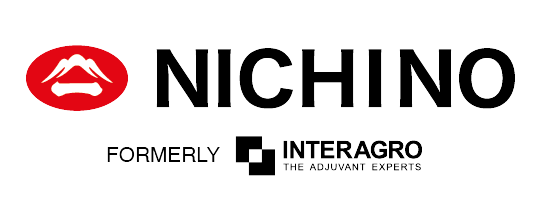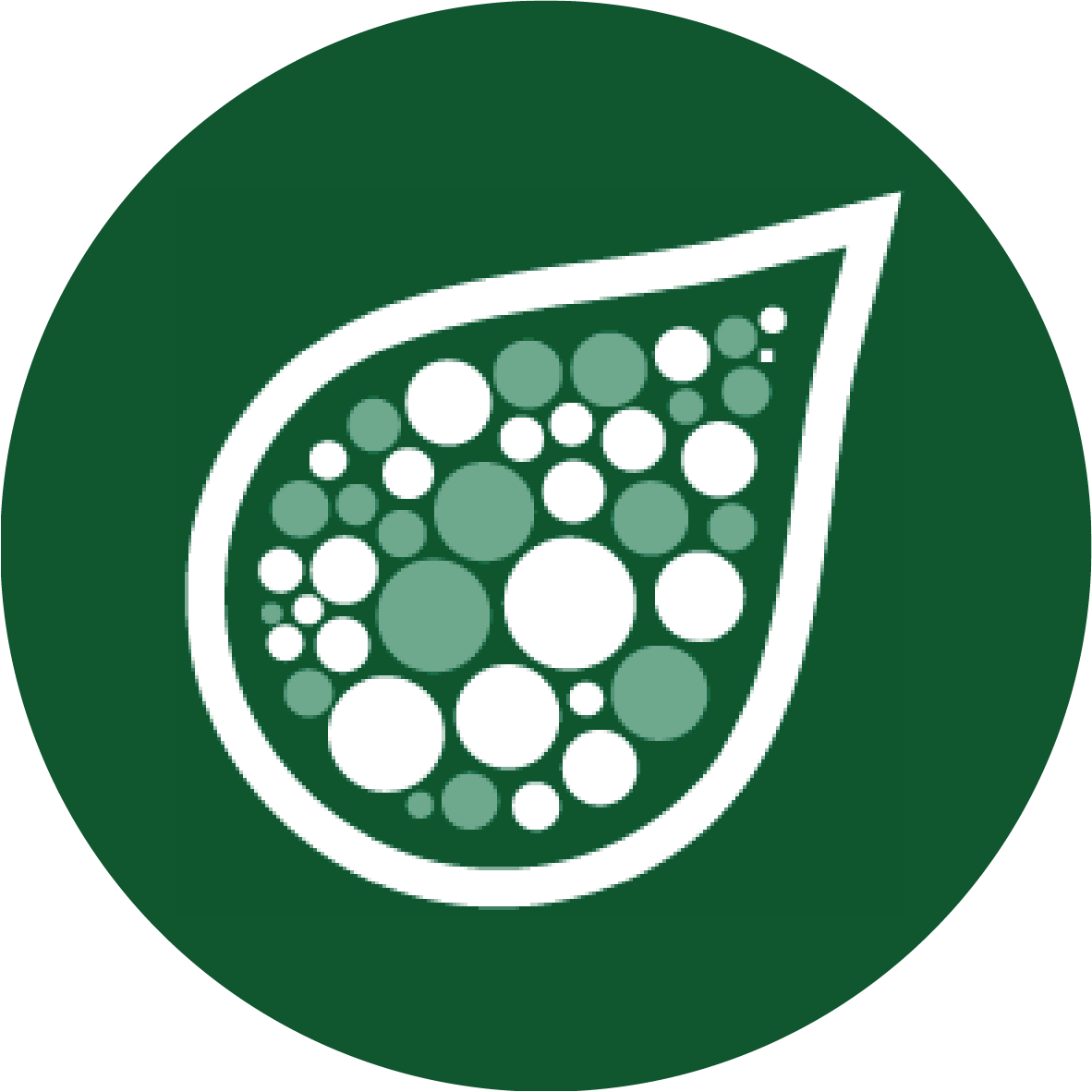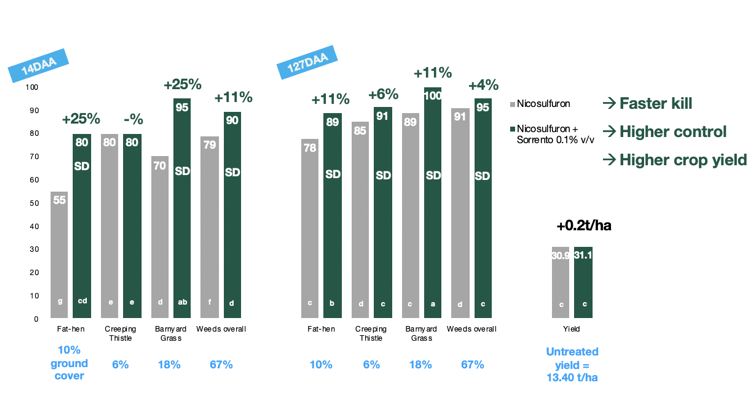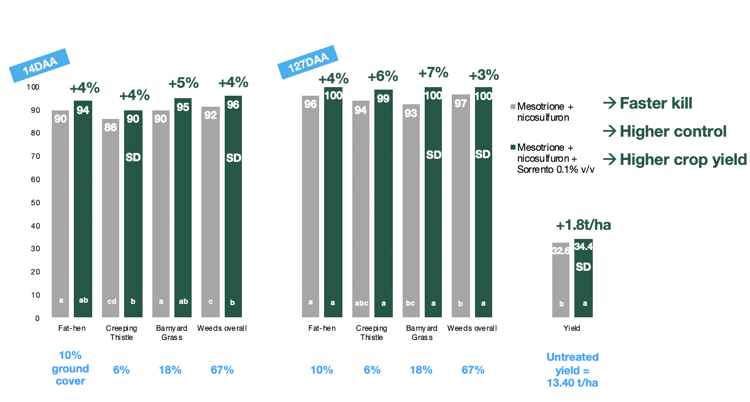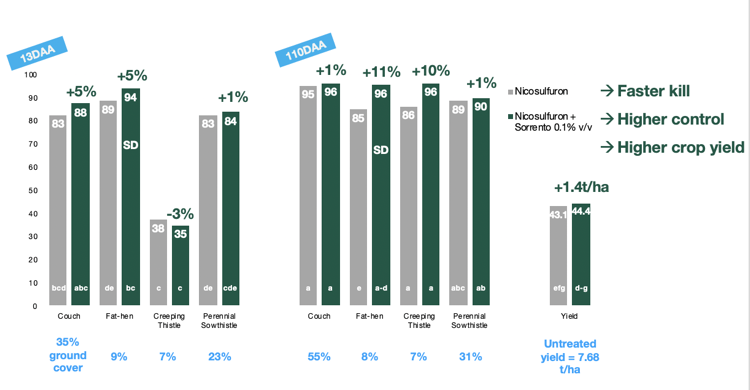Overcome weed control obstacles to optimise maize potential
Despite its stature, maize is remarkably uncompetitive in its early stages and requires an effective weed control programme to optimise yield and quality potential. Incorporating Nichino UK’s new adjuvant Sorrento into your post-emergence herbicide application this spring offers the key to weed free high yielding maize crops.
Keeping the maize crop free from early weed competition is crucial to protect yield in the first month or so after emergence. Weeds can easily smother the crop, competing for light, water and nutrients but treating weeds post-emergence can cause a particular set of physical challenges that limit herbicide performance, where even the best herbicide formulation will need assistance to reach it’s target site inside leaf tissue. Yield losses of up to 65% are an unfortunate possibility where weed control is left until late in the season (source: Maize Growers Association).
The loss of Calaris (mesotrione + terbuthylazine) from the post-emergence herbicide toolbox will make it even more important to optimise herbicide performance heading in to Spring 2021.
Nichino UK’s spreading and penetrant adjuvant Sorrento has shown excellent performance benefits in maize and could be a useful insurance policy for growers at the post-emergence spray timing to overcome the obstacles that impact herbicide performance in order to optimise available chemistry and minimise weed competition.
Factors impeding herbicide performance in maize
- Water beading limits spray coverage and retention across the leaf
- The leaf cuticle is the biggest barrier to pesticide applications
- Moderate to highly water soluble herbicides need an adjuvant

Water beading limits spray coverage across the leaf
As the crop increases in size, the delivery of post-emergence herbicides to target weeds becomes more tricky. Weeds can become shaded and herbicide intercepted by the crop, leading to poor coverage and a significant reduction in the control of target weeds – also now larger and more difficult to control by this stage. Weed control can also be particularly challenging with spring germinating weeds such as fat-hen and sowthistle that have hairy/waxy leaves which reduce the herbicide:leaf contact required for effective coverage across the whole leaf. This is because both hairy and waxy leaves reduce the ability of the herbicide to spread out and be retained on the leaf.
Whilst the in-can adjuvancy provided with some herbicide formulations will help to a certain extent, only tank mix adjuvants deliver near perfect spreading. This is because the rate of the in-can adjuvant is fixed by the pesticide rate per hectare, whereas the adjuvant added in a tank mix can be adjusted based on the total volume of water and pesticide being used.
The leaf cuticle is the biggest barrier to herbicide applications
Once the herbicide has spread out on the leaf it must penetrate the leaf cuticle and the living tissue inside. The cuticle, on the upper and lower surfaces of the leaf, to protect against water loss and desiccation, is the biggest barrier to effective weed control. Weeds which are particularly waxy such as fat-hen, are also more hardened to herbicide so uptake can be slow. With the resulting poor coverage and uptake into weeds, a significant reduction in weed control can be of real threat to the crop.
Moderate to highly water soluble herbicides need an adjuvant
The ability of a herbicide active to enter the cuticle is determined by its chemical properties. Herbicide active ingredients with low water solubility are able to penetrate leaf cuticles by simple diffusion through the waxy components, which make up the most part of the cuticle. The rate of movement through the cuticle for herbicides with moderate to high water solubility is much less, resulting in less herbicide being absorbed. Herbicide actives with moderate to high water solubility need a suitable adjuvant to penetrate the waxy cuticle in order to increase the flow of active ingredient into the leaf. Download our Sorrento guide here for a list of some commonly affected herbicides.
Hit your goal, gain control of weeds with Sorrento
Sorrento is a new and unique activator adjuvant based on the latest adjuvant technology that helps to optimise the delivery of post-emergence herbicides into weed leaf targets for the highest levels of weed control possible.
Sorrento key benefits:
- Improves spreading and retention across the leaf for optimum coverage and contact
- Increases cuticle penetration, resulting in higher uptake into the leaf
- May increase yield, particularly in crops such as maize that struggle with weed competition
Sorrento has shown significant improvements in maize weed control in trials
Enhanced grass-weed control seen in forage maize on farm
A tramline trial was set up in 2020 to assess weed control with and without the addition of Sorrento, with the help of Agrii agronomist Todd Jex. For the farmer, George Fraser, the barnyard grass was the worst he’d seen it in the continuous maize field so the additional level of control achieved with the Sorrento was seen to be very valuable. Learn more here.

Overcome weed control obstacles to optimise maize potential

Download your copy of our Sorrento guide to hit your goal and gain control of weeds in maize.
Find out more about the benefits of Sorrento in maize, review our trials results and find out how its been helping on farm, by downloading our latest product guide here.
